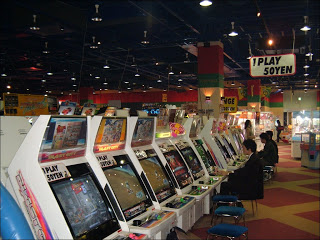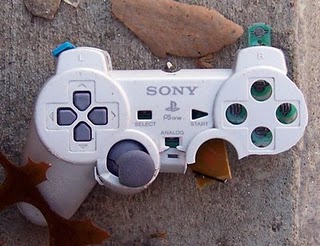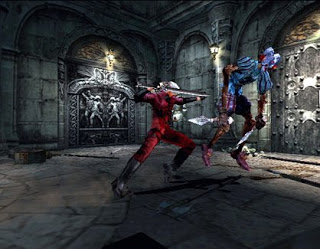This post has not been edited by the GamesBeat staff. Opinions by GamesBeat community writers do not necessarily reflect those of the staff.
Difficulty is part of the DNA of every modern video game. Back in the days of the arcade, cabinets were very expensive. Proprietors needed tough titles to make money, and developers upped the difficulty in order to drain the pockets of consumers. The less time you provided per quarter, the better.
The age of the arcade is over. Dealers are slowly redistributing classic cabinets to nostalgic collectors or destroying them for parts. Surely then extraordinary difficulty is a relic of the past. Developers have inverted the traditional philosophy behind making money; the more entertainment time you provide per dollar, the better.
But we still crave the satisfaction of tussling with a game. We love the sense of accomplishment we feel when we come out on the other side victorious. And whether we like it or not — and we almost certainly do — difficulty is going to be with us until Bobby Kotick runs every franchise in existence into the ground.
These taxing experiences come in two forms: One kind hardens the player’s resolve in times of crisis. The other can turn even the most serene individual into an emotional wreck. Gamers often hold the former dear to their hearts, while they deride the latter for its "cheapness." But what divides the two? And what can designers do to safeguard the controllers of the world?
It’s your fault
The appeal of the medium, not surprisingly, stems from a desire for personal agency. Like it or not, external forces often wrench control of our lives away from us. A petty thief, an incompetent coworker, an immoral politician: All of these individuals can influence on our lives, often completely without our consent. We have some control over our existence: We can vote. We can work off our feet day after day or sit around and be lazy. But in the end, personal choices are merely contributing factors to the sum total of our lives. Not everything is within our grasp.
That’s a key difference between a "real" world and a virtual one. Reality contains an element of chaos. Virtual experiences rely on mathematical rules and predictability. If you complete a bunch of puzzles and navigate a series of platforms flawlessly, then you can save the world and rescue a loved one, without a shadow of a doubt.
The point here is that in order to fulfill this core expectation of design, defeat needs to make sense. This means imminent failure must be apparent to the player. Things like projectiles from an unseen foe and invisible traps strip the player of control and invariably harm the experience. No one likes to die, but its more bearable when you know it’s your fault.
Treat others as you would have others treat you
Nothing feels like a kick in the crotch more than complete decimation at the hands of an enemy. This happens quite a bit in Bayonetta, a title that I happen to be particularly fond of. It’s criminally easy to spend upwards of 30 seconds in the air after a lightning-fast uppercut catches you in the jaw.
But given a little practice, you'll be able to reverse the situation. You can spend minutes knocking an enemy senseless while it struggles to find its way back down to earth. The rules governing both Bayonetta and her opponents are largely identical. Anything that the enemies do to you can be returned in due course. In other words, the bigger the punishment is, the sweeter the retribution will be.
This rule also covers any environmental damage that your character may incur. If a boss emits an energy wave, it should affect the enemies to the same magnitude that it does you. The same goes for ledges and pits.
Making player-enemy equality a priority goes a long way toward mollifying unnecessary frustration.
It’s not a numbers game
Spending ages whittling down the health of a gigantic boss is rarely much fun, especially when the battle tests your patience more than your skill. Bombarding the player with dozens of enemies isn’t too enjoyable, either. Despite this, developers often inflate enemy numbers or boost toughness to increase difficulty.
If players choose to run through a title on Hard mode, you can be fairly certain they’ve already cleared Normal or Easy mode. Most people are probably looking for something a little different the second time around.
New foes, player handicaps, and alternate mission objectives force the player to engage with challenges differently. If an audience appreciates a game enough to dive back in, then the developer better serve up something new.
In a perfect world
Were we to don our utopian hats and peer into the future, we might expect to see a world devoid of difficulty settings entirely. The thing that separates people who play on different settings isn't their tolerance for frustration; some people are merely a little more accomplished than others, and really, everyone wants a level of difficulty that presents a mild challenge.
It’s not too hard to imagine how adaptable experience might work. Every player starts at the same place, and the game takes stock of the user's performance. At the end of each specific segments, a nifty little script runs and readjusts the difficulty.
The first Devil May Cry tried this, but in a very obtuse way. If you died too often within the first few levels, a screen would pop up and ask if you might prefer Easy mode. Obviously, people rarely took this option because "I can't do it" is an embarrassing admission. Hiding the switch from the player would eliminate this problem.
Such a system would be hard to implement without producing a wonky learning curve, but it’s a topic worth mulling over. The "dumbing down" of modern games has become a common concern, and putting more effort into a variety of modes might keep an audience from moving on to greener pastures.
At any rate, it’s worth noting that my first two suggestions hold whether difficulty levels exist or not.
In the end, the deciding factor always comes down to overall quality. Claiming the existence of an easy solution is naive at best — especially you're a blogger with no design experience. That said, pondering such an important aspect of the medium is a good thing. It could lead to solutions that pay big dividends.





